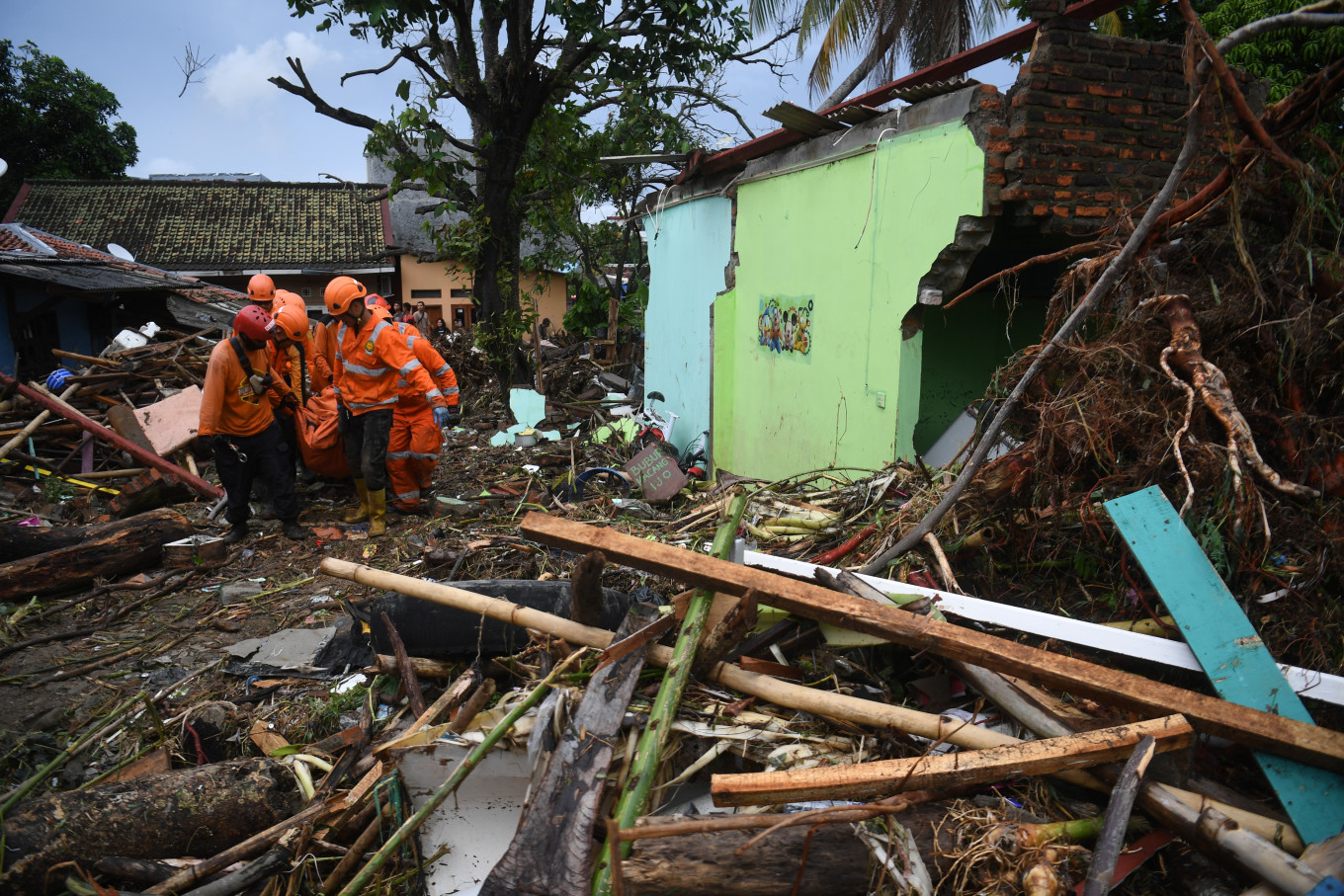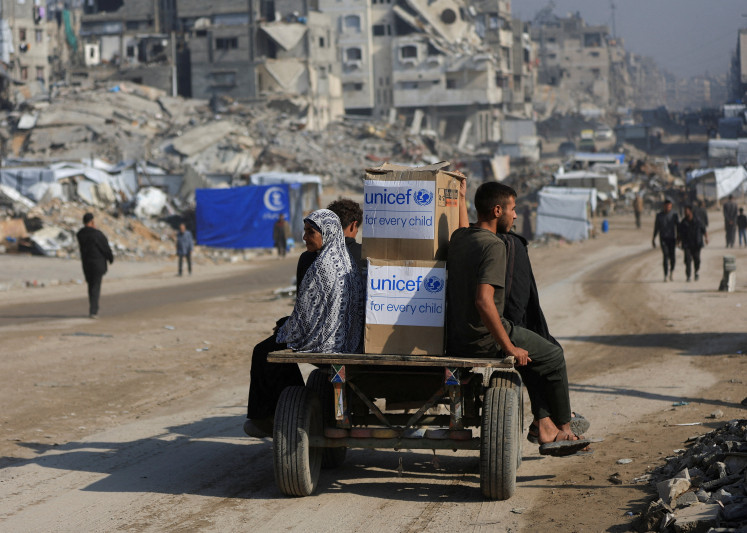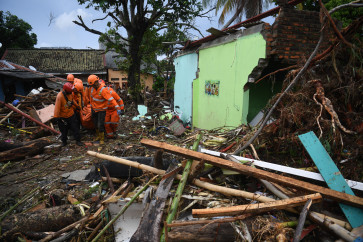Popular Reads
Top Results
Can't find what you're looking for?
View all search resultsPopular Reads
Top Results
Can't find what you're looking for?
View all search resultsStop funding disasters, start financing resilience
Every dollar spent on disaster preparedness multiplies in value by reducing future losses and safeguarding development gains.
Change text size
Gift Premium Articles
to Anyone
 Basarnas personnel evacuate victims who died due to flash floods in Pelabuhanratu, Sukabumi, West Java, on March 7, 2025. The Sukabumi City BPBD said that hydrometeorological disasters such as floods and landslides that hit the area on March 6-7, 2025 reached 18 points and affected 91,000 people. (Antara Foto/Akbar Nugroho Gumay)
Basarnas personnel evacuate victims who died due to flash floods in Pelabuhanratu, Sukabumi, West Java, on March 7, 2025. The Sukabumi City BPBD said that hydrometeorological disasters such as floods and landslides that hit the area on March 6-7, 2025 reached 18 points and affected 91,000 people. (Antara Foto/Akbar Nugroho Gumay)
W
hen disasters strike, Indonesians know the pain. It is lives lost, homes destroyed, and livelihoods upended. Yet every rupiah spent on relief and reconstruction is also an indictment. It is a failure to invest in resilience ahead of time.
Today, as Indonesia marks the International Day for Disaster Risk Reduction under the theme "Fund Resilience, Not Disasters," we must confront a pivotal question: What if we invested more before disasters happen, making them less damaging and more manageable?
Indonesia is among the world’s most natural disaster-prone countries. In 2023 alone, the National Disaster Mitigation Agency (BNPB) recorded 5,400 disaster incidents, a 52 percent surge from the previous year. Nearly all were hydrometeorological events, floods, fires, droughts and extreme weather, that were caused or intensified by climate change.
The climate crisis poses serious economic and food security challenges. The Asian Development Bank (ADB) projects that, under a high-end emissions scenario (SSP5–8.5), Indonesia could face a staggering 61.1 percent reduction in GDP by 2100. Already, the National Development Planning Agency (Bappenas) estimates that climate-related losses cost the state at least Rp 22.8 trillion (US$1.37 billion) annually. The most affected sectors such as agriculture, forestry, and fisheries contribute nearly 13 percent of the nation’s GDP and are highly sensitive to climatic changes, leaving about 15 percent of Indonesia’s regions highly vulnerable to food insecurity.
This trend is not isolated to Indonesia. The United Nations Office for Disaster Risk Reduction (UNDRR) reports that the global cost of disasters has soared from an annual average of $70–$80 billion (1970–2000) to as much as $200 billion (2001–2020). These figures attest that disasters are recurring, intensifying, and becoming increasingly expensive. Waiting until after they strike is simply the costliest decision possible.
Post-disaster spending dominates public budgets, consuming vast resources for reactive relief and reconstruction. Every rupiah spent after a disaster is, in effect, proof that a necessary investment was not made before.
The irony is clear: prevention pays. A World Resources Institute study covering 320 resilience investments found that every $1 spent on adaptation yields more than $10 in benefits within a decade. Early warning systems, climate-resilient infrastructure, and disaster risk management save lives, sustain livelihoods and boost public confidence.


















